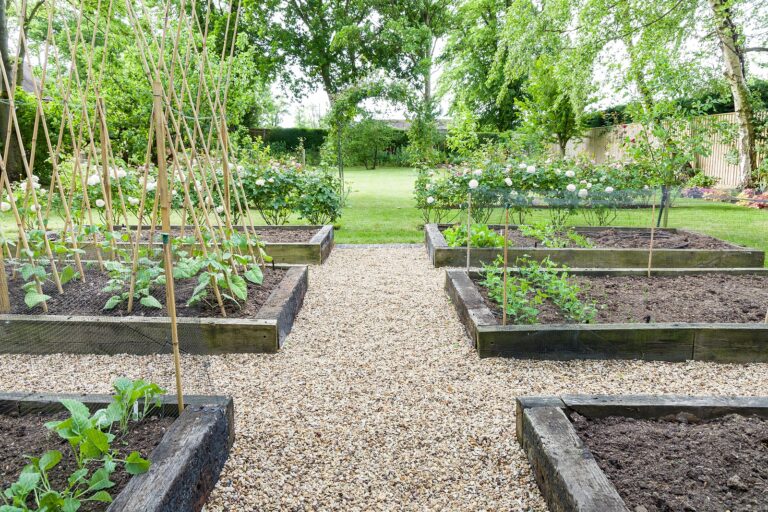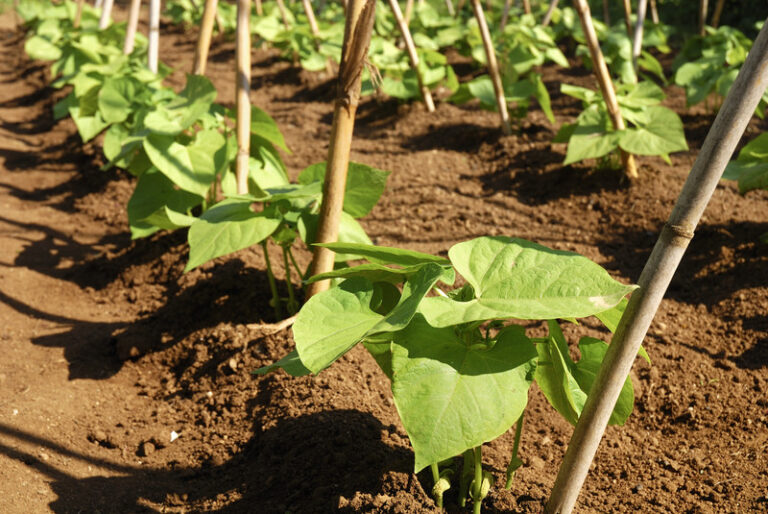How to Plan a Regenerative Garden from the Ground Up
Planning a regenerative garden is about more than planting vegetables—it’s about designing a system that works with nature to build soil, conserve water, support biodiversity, and create long-term productivity. Over decades of gardening experience, I’ve found that thoughtful planning from the start makes all the difference in creating a thriving, resilient garden.
A regenerative garden integrates perennials, annuals, cover crops, beneficial animals, and soil-building practices in a harmonious way. By considering site conditions, plant interactions, water flow, and nutrient cycles, you can create a garden that reduces labor, improves yields, and strengthens the ecosystem.
Steps to Plan Your Regenerative Garden
- Assess Your Site
- Evaluate sunlight, soil type, water availability, slope, and microclimates.
- Map existing trees, structures, and pathways.
- Design for Soil Health
- Plan raised beds, mounds, or swales if needed for drainage and water retention.
- Incorporate compost, mulch, and cover crops.
- Select Plants Strategically
- Include a mix of annuals, perennials, nitrogen-fixers, and pollinator-friendly species.
- Consider plant layering for vertical and horizontal diversity.
- Integrate Animals
- Chickens, ducks, bees, and worms can help close nutrient loops, control pests, and improve soil.
- Plan Water Management
- Capture rainwater, build swales, and mulch to reduce irrigation needs.
- Design planting zones according to water requirements.
- Design for Biodiversity
- Add native plants, flowering strips, and hedgerows.
- Include habitat for beneficial insects, birds, and soil organisms.
- Implement Crop Rotation and Polycultures
- Rotate crops annually to maintain soil fertility and prevent pest buildup.
- Combine companion plants for mutual benefit.
- Start Small and Expand
- Test your design on a manageable scale, observe results, and adjust over time.
Tips from My Garden
I start by sketching a map of my garden, noting sun exposure, water flow, and existing plants. I rotate vegetables in raised beds and interplant perennials along edges, adding mulch and compost regularly. Chickens and bees play a role in closing the nutrient loop, and cover crops keep the soil alive year-round. This approach ensures a resilient, productive, and low-maintenance garden system.
Regenerative Garden Planning Cheat Sheet: Design, Build, and Sustain Healthy Gardens
Why Plan Regeneratively
- Build healthy, nutrient-rich soil
- Conserve water naturally
- Support biodiversity and beneficial insects
- Reduce labor while increasing yields
- Create a resilient, long-term garden ecosystem
Step-by-Step Planning Guide
| Step | Action | Quick Tips |
| 1. Assess Your Site | Evaluate sun, soil, slope, water, and microclimates | Map existing trees, structures, and pathways for planning |
| 2. Design for Soil Health | Improve drainage and fertility | Use raised beds, mounds, or swales; add compost and mulch |
| 3. Select Plants Strategically | Mix annuals, perennials, and pollinator-friendly plants | Include nitrogen-fixers and layered plantings for diversity |
| 4. Integrate Animals | Close nutrient loops and control pests | Chickens, ducks, bees, and worms contribute to soil fertility |
| 5. Plan Water Management | Reduce irrigation and capture rain | Build swales, mulch beds, and zone planting according to water needs |
| 6. Design for Biodiversity | Encourage healthy ecosystems | Plant native species, flowering strips, hedgerows, and habitats for beneficial insects and birds |
| 7. Implement Crop Rotation & Polycultures | Maintain soil fertility and reduce pests | Rotate crops yearly; interplant companions for mutual benefit |
| 8. Start Small and Expand | Test design and adjust | Observe results, refine layout, and scale gradually |
Additional Tips
- Sketch your garden layout before planting
- Observe soil, light, and water flow regularly
- Mulch heavily to suppress weeds and retain moisture
- Integrate cover crops to keep soil alive year-round
- Rotate animals and crops to maintain balance and fertility
Regenerative Gardening Learning Hub
🌿 Start here: The Complete Guide to Regenerative Gardening and Farming
1️⃣ Soil Health and Living Systems
- How to Build Living Soil: A Step-by-Step Guide
- Understanding the Soil Food Web: Life Beneath Our Feet
- How to Use Compost and Vermicompost in a Regenerative Garden
- Mulching for Soil Health: How to Protect and Feed the Soil Naturally
- Using Mycorrhizal Fungi to Boost Plant Health and Yield
- Minimal Tillage: Why and How to Disturb the Soil Less
- How to Test, Read, and Rebalance Your Soil Naturally
2️⃣ Biodiversity and Polyculture
- How to Design Polycultures and Companion Plantings for Regenerative Gardens
- Integrating Native Plants into Your Food Garden
- Creating Habitat for Beneficial Insects and Pollinators
- Cover Cropping for Biodiversity and Soil Regeneration
- Crop Rotation for Soil Fertility and Pest Management
3️⃣ Carbon Sequestration and Organic Matter
- Why Capturing Carbon in the Garden Is Important and Fights Climate Change
- Increasing Soil Carbon with Compost, Mulch, and Deep Roots
- Biochar: What It Is and How to Use It in the Garden
- How to Keep Soil Covered Year-Round to Build Carbon and Fertility
4️⃣ Water Stewardship
- How to Use Water Wisely: The Principles of Water-Wise Regenerative Gardening
- Building Swales and Contour Beds to Slow and Sink Rainwater
- Mulch, Groundcovers, and Soil Structure for Water Retention
- Harvesting Rainwater for Regenerative Gardens
5️⃣ Perennial Crops and Permanent Systems
- How to Transition from Annuals to Perennials in the Vegetable Garden
- Perennial Vegetables for Regenerative Systems
- Agroforestry and Food Forest Basics for Gardeners
- Integrating Fruit Trees and Shrubs into the Vegetable Garden
6️⃣ Animal Integration
- Chickens in the Garden: How to Use Them Regeneratively
- Using Worms and Bees as Regenerative Allies
- The Role of Animals in Closing the Nutrient Loop
7️⃣ Human and Community Connection
- The Ethics of Regenerative Gardening: Care for Earth, People, and Future Generations
- How to Build a Community Garden Using Regenerative Principles
- Teaching Regenerative Gardening to Children and Beginners
- Healing the Land and Ourselves: The Psychology of Regenerative Practice
8️⃣ Regenerative Design and Planning
- How to Plan a Regenerative Garden from the Ground Up
- Regenerative Gardening Principles Simplified for the Home Gardener
- Home Garden Permaculture
- How to Create a Home Food Forest
- French Intensive Gardening
- Square Foot Gardening
- Zone and Sector Planning for Small Regenerative Gardens
- Using Observation and Feedback to Improve Your System Each Season
9️⃣ Inputs and Outputs: Closing the Loop
- How to Make and Use Compost Tea and Fermented Plant Extracts
- Zero Waste Gardening: How to Cycle Nutrients and Minimize Inputs
- How to Build a Closed-Loop Garden System
10️⃣ Case Studies and Personal Experience


